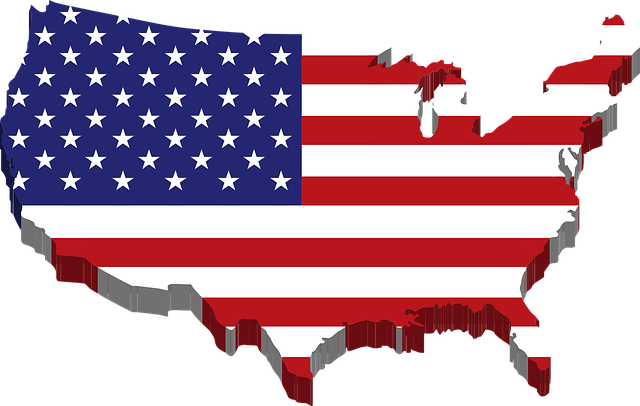The 5 by 8 American flag is intentionally designed with a specific ratio to maintain its visual significance in various display locations, honoring national identity, unity, and freedom. Its display in government buildings follows strict legal guidelines from the Flag Code, ensuring respect and dignity. This size offers a striking visual impact while remaining practical for outdoor installations, fostering civic pride and community engagement by symbolizing core American values.
“In the realm of government buildings, the display of the American flag serves as a powerful symbol of national pride and unity. This article delves into the optimal flag size for these structures, exploring the significance of the 5 by 8 ratio, its historical context, and legal guidelines. We’ll navigate best practices for public structures, discuss visual impact, and uncover how the right flag size can enhance government spaces, ensuring a respectful and aesthetically pleasing display of our nation’s colors.”
- Understanding Flag Proportions: The Significance of 5 by 8 Ratio
- Historical Context: Evolution of Flag Sizes in Government Buildings
- Legal Guidelines for Displaying the American Flag
- Best Practices for Choosing Flag Size on Public Structures
- Visual Impact and Esthetics: Enhancing Government Spaces with Flags
Understanding Flag Proportions: The Significance of 5 by 8 Ratio

The size and proportions of a flag are not mere aesthetic considerations; they hold significant meaning and convey important symbolism. When it comes to the American flag, specifically, the 5 by 8 ratio has been meticulously designed to represent the nation’s values and history. This proportionate standard ensures that each star and stripe retains its visual impact, regardless of the flag’s size or where it is displayed—be it a government building, a historical monument, or a private residence.
Adhering to this 5 by 8 ratio for government buildings is more than just a guideline; it is a way to honor the principles upon which the nation was founded. The arrangement of stripes and stars in this particular format has become an iconic symbol of American identity, unity, and freedom. Thus, maintaining these proportions in flag displays across government facilities serves as a constant reminder of the nation’s core values and its commitment to these ideals.
Historical Context: Evolution of Flag Sizes in Government Buildings

The size of flags displayed in government buildings has evolved over time, reflecting both cultural and practical changes. Historically, the use of flags as symbols of national identity and power dates back centuries. However, it’s only in recent times that specific standards for flag sizes have been established, particularly for official government displays. Before standardized guidelines, flags varied greatly in size depending on their intended use and the resources available.
In the United States, for instance, a common size for indoor displays is the 5 by 8 American flag. This size offers a balance between visual impact and practicality, allowing the flag to be prominently featured while remaining manageable for hanging or mounting. Such standards have become more widespread as governments seek to present a unified front, ensuring that national symbols are displayed with consistency and respect across all official spaces.
Legal Guidelines for Displaying the American Flag

In the United States, the display of the national flag, including the popular 5 by 8 American flag, is governed by legal guidelines to ensure proper respect and honor. These standards are outlined in the Flag Code, a set of regulations that provide specific instructions on how and where the flag can be displayed. According to the Flag Code, the 5 by 8 dimensions refer to the ratio at which the flag should be flown, ensuring its integrity and prominence. When displaying the flag outside government buildings, it should be hoisted at the peak of the staff, with no other object or building covering or obscuring its view. The flag should also be illuminated, especially when displayed after dark, to maintain its dignity.
The legal guidelines further specify the proper way to fold and store the flag, emphasizing the 5 by 8 dimensions in these processes. During ceremonies or events, the flag should be handled with care, never allowed to touch the ground, and always presented at an angle of 45 degrees or more. These rules ensure that the American Flag, including the iconic 5 by 8 variant, is treated with the utmost respect and dignity it deserves, reflecting the values and traditions of the nation.
Best Practices for Choosing Flag Size on Public Structures

When selecting the appropriate size for flags displayed on government buildings, it’s crucial to consider both aesthetic appeal and practicality. A commonly recommended standard is the 5 by 8 feet American flag, which offers a striking visual impact while being functional for outdoor display. This size strikes a balance between being large enough to be noticeable from a distance and small enough to be manageable in terms of installation and maintenance.
Best practices suggest that flags should be proportionate to the structure they adorn. For larger government buildings, a flag of this size can make a bold statement without appearing overly oversized. It’s also essential to factor in wind conditions; a sturdier flag design, perhaps with reinforced stitching or added grommets, might be preferable for locations with consistent breezes. Proper installation and regular maintenance will ensure the flag remains vibrant and respectful, enhancing the building’s exterior rather than overpowering it.
Visual Impact and Esthetics: Enhancing Government Spaces with Flags

In the realm of government buildings, incorporating flags can significantly elevate both the visual impact and esthetics of these spaces. Displaying a 5 by 8 American flag, for instance, serves as a powerful symbol of national pride and unity. The vibrant colors and precise design elements resonate with citizens, fostering a sense of belonging and community within these official structures.
Beyond its symbolic value, the strategic placement of such flags enhances the overall aesthetics, creating visually appealing environments. Whether in lobbies, courtyards, or outdoor spaces, they become focal points that draw the eye and invite interaction. This integration not only enriches the physical surroundings but also communicates important messages about the values and principles upheld by these government institutions.
